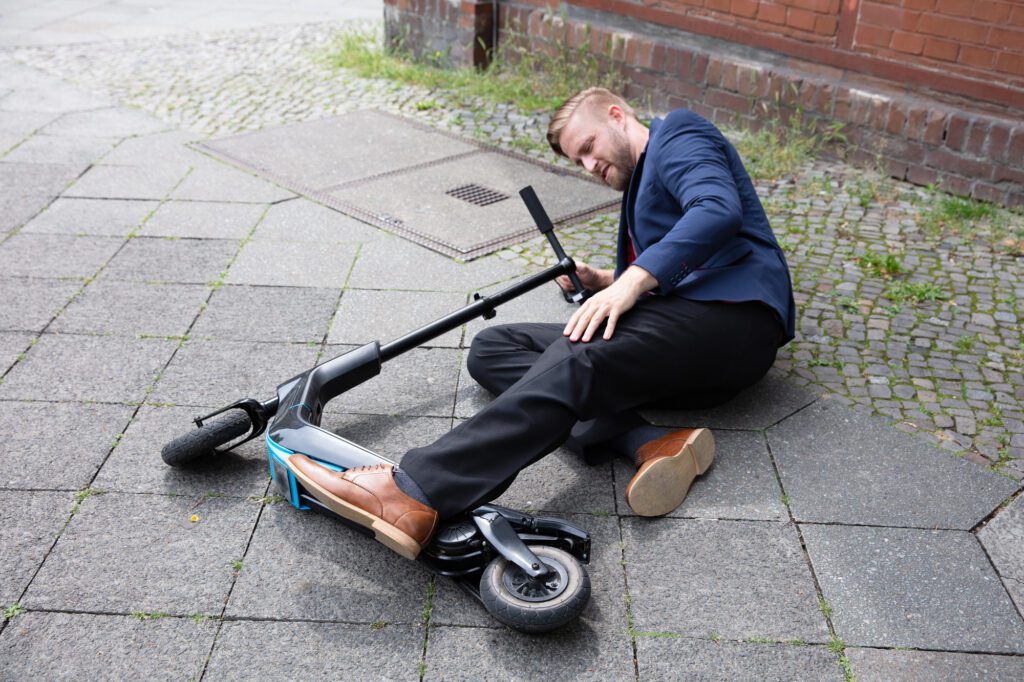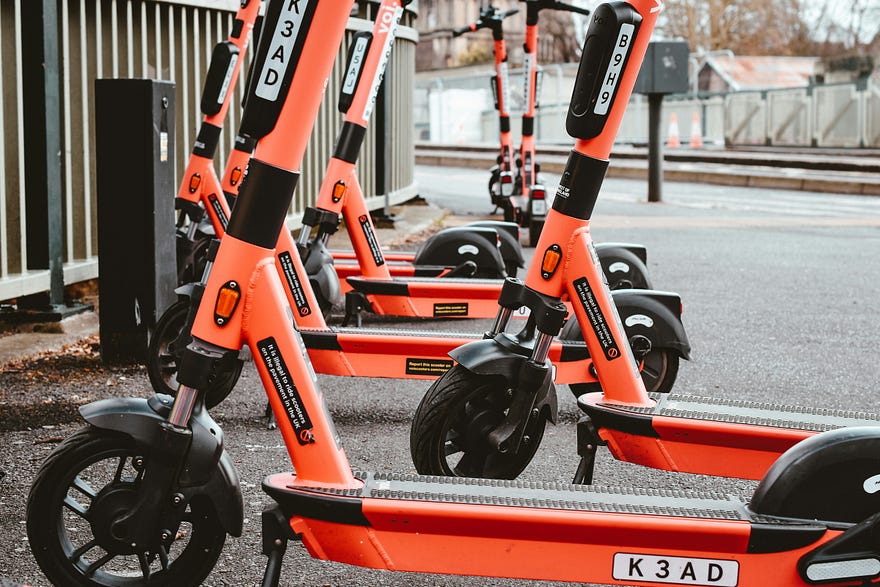Did we put the cart before the horse (Again)?
Remember when transportation choices were limited? Over short distances, you either caught a tram, train, bus, or walked.
These days, walking is out. It is too slow, and you get all hot and sweaty or some other excuse.
Next step someone thought, let’s put an electric motor on a scooter. Enter the electric scooter (e-scooter); now we are talking!
The Rise of the Daemon
In Australia, e-scooters seemed to sneak into all the capital cities just like in other countries. Now they are everywhere: brightly coloured two-wheeled torment machines.
Revenue from the e-scooter market was $66.38 million in 2023, but that number will rise to $154 million in 2027.
Research also shows that 50 million e-scooters and e-bike units were sold worldwide in 2020, but this number is expected to rise to 129 million by 2028, with North America being the market leader.
They are here to stay!
Whether privately owned or part of the fleet offered by rental companies, e-scooters are a quick way to commute between offices in a city or nip down the road for lunch. This is music to the ears of lazy people who are beyond walking a few blocks.
If you don’t own one, no problem; just hire one. Somehow, users tap the scooter with their credit card, and off they go to cause havoc at breakneck speed down the footpath, on the road, or wherever they can. When they are finished, they dump the scooter and walk off.
Like most new fads, the problem is that entrepreneurial private companies sell the idea, people latch onto it like a leach, and suddenly, we have a plague worse than a summer swarm of locusts.
What’s your problem, you say? Have you ever ridden on one?
No, is the short answer, I value my life too much.
My problem is that E-scooters have been introduced so quickly that we have not implemented the necessary laws, regulations, or common-sense safety guidelines with any conviction.
We have put the cart before the horse.
They are a death trap waiting to happen unless we get greater control over who and how they are used.

The Bad News About E-scooters
Data from various studies highlight the upsurge in serious injuries associated with e-scooters. In one American study, the rate of injury per mile travelled was 175 to 200 times more than country-specific injury rates from cars.
Emergency department data on e-scooter injuries, nationally and internationally, is sobering. Rates of injuries are increasing by about 20% per year, and scooter-related injuries have overtaken bike-related injuries, with 50% requiring surgery.
Reports from the American College of Surgeons show that scooter-related injuries increased threefold in four years.
In Queensland, Australia (the highest e-scooter users in the country), injury rates increased 25% last year following an 85% increase for the previous two years after their introduction.
There are three areas of concern:
-
Where does the e-scooter go – on the road, footpath, where?
-
At what age should kids be allowed to use an e-scooter?
-
How do we moderate and control behaviour on e-scooters – how fast, use of helmets, etc.? How do we police it?
Wherever Your Bike Will Take You
In some countries (like Australia), users are allowed to ride on bike paths, shared paths, and most local roads with speed limits under 50km/h, excluding roads with dividing lines or one-way streets with more than one marked line. Speed limits vary between 10km/hr and 25 km/hr.
It is the same in the US, but the speed limit is 35 m/hr. In Europe, it varies by country, with the toughest regulations applying in the UK, where they are classified as powered transport equivalent to a car.
Although speed limits are implied, they are not uniformly enforced. Even at the lowest limit of 10 km/ hr, it is attractive for users; many just ignore the limits and go as fast as their scooter will carry them.
So you are rattling along a road at the maximum speed of 25 km/hr, without a helmet because, well, it’s just a scooter, and without padding because that would look dorky, and you hit a pothole.
Kaboom, you are going to get hurt!
In a different scenario, you are on the footpath, and your whisper-quiet scooter makes no sound, so the poor old man in front of you doesn’t hear it and steps sideways.
Kaboom, kaboom —a double tragedy!
Data shows that scooter injuries were more likely to have paralysis or long bone fracture than bike injuries, but both groups had similar trends in traumatic brain injuries.
Too young to drive, too young to ride
Age requirements for e-scooters vary by country and even states or territories. In the US, for example, some states, like Texas, California, and Georgia, require riders to be at least 16, while others, like Washington, Colorado, and Kentucky, don’t have age restrictions.
In Australia, children under 16 can’t use them except in one state, SA, where the limit is 18, and in ACT and QLD, children under 12 years must have adult supervision.
The reality is that children of all ages use them, often without helmets, often on the road, and often with two or three on the same scooter.
A 2022 study found 87% of children who experienced skull fractures while riding e-scooters were not wearing helmets.
It is like giving a gun to a kid and telling them to play safely with it; you know it is not going to happen!

Do What You Like – It’s Only a Scooter!
A significant issue that needs to be addressed is people’s blasé attitude toward e-scooters because they think of them as scooters, not motorised vehicles.
Key distractions (using smartphones) or impairment related to the use of earbuds listening to loud music, use of alcohol and mind-altering drugs, and lack of training to operate a given device all add up to danger.
It’s illegal to be drunk on an e-scooter … but police can’t undertake a random breath test. Like bikes, they often provide an ‘easy out’ to go down to the pub and then cruise back to wherever under the influence, but avoiding random breath testing.
Many people cannot comprehend even the most common-sense situation of not wearing a helmet. Yes, they have one, but it is tied to the handlebars.
An Easy Out
E-scooters are taking over, and whether that is revolutionary or a safety nightmare, it is too late. They are here to stay.
The lack of attention to regulations and, more importantly, how to enforce them should have been sorted out before they took over. The lackadaisical approach provides an easy out.
Progress from having to walk everywhere?
Absolutely, but as with all technological advances, convenience comes at a cost. With e-scooters it could be your life, someone else’s or even worse, both!
Till next time
Calvin


